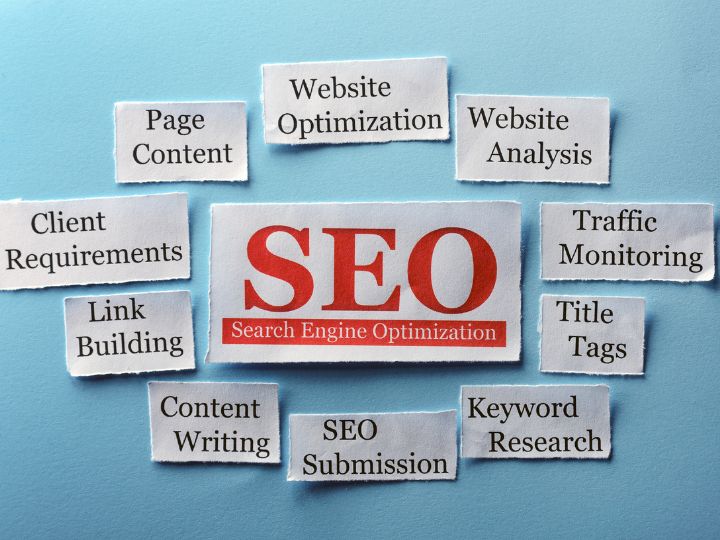Having a local SEO checklist is a game-changer for businesses. It’s the key to standing out in a crowded digital marketplace.
But what exactly is local SEO?
It’s a specialized form of search engine optimization. It focuses on improving a business’s visibility in local search results.
Why does this matter?
Because local searches lead to action. Studies show that a significant percentage of local searches result in a purchase.
This article will guide you through a local SEO checklist. It’s designed to help your business increase its local search visibility.
So, whether you’re a seasoned marketer or a local business owner, this guide is for you. Let’s dive in.
On-Page SEO Elements
On-page SEO is crucial for local search success. It involves optimizing individual web pages. This improves their relevance and rankings in search engines.
Begin with your page titles. Ensure they include local keywords. This helps search engines understand your business’s location.
Meta descriptions are the next element to consider. They provide a summary of your page’s content.
Additionally, integrate local keywords into your headers. This helps emphasize your connection to your area.
Optimize your page’s URL structure. Make it clean and descriptive. URLs should reflect your page’s content.
Images are vital too. They enhance user experience and can be optimized for SEO.
Use alt text for every image. This helps search engines recognize them. Make sure to include local keywords where relevant.
Consider the content itself. It should be informative and localized. Tailor your message to address local interests and concerns.
Use structured data markup. This helps search engines better understand the content.
Consider using a local business schema. It boosts your visibility in search results.
Design your site for mobile use. Many local searches happen on mobile devices. Ensure your site is responsive and loads quickly.
Page speed is also important. A slow site can harm user experience and rankings.
Make your contact information easy to find. Include it in your header or footer. This makes your business more accessible.
Use internal links to guide users. Connect related pages within your site.
Finally, don’t forget external links. Link to authoritative sources. This can improve your site’s credibility.
Regularly update your content. This keeps it relevant. Fresh content can also lead to better rankings.
By optimizing these on-page elements, you can enhance your local SEO effectiveness. This is a fundamental step in achieving better visibility.
Meta Description
Meta descriptions have a significant impact on click-through rates. They’re short summaries appearing below your page title in search results.
A well-crafted meta description can influence user behavior. It should succinctly describe your page’s content. Aim for a length of about 155-160 characters.
Use local keywords within your meta description. This helps attract searchers from your area. It clarifies your business location to search engines.
Remember, a good meta description is both informative and compelling. Encourage users to click on your link. Consider it a mini advertising message.
Avoid duplicate meta descriptions across your site. Each page should have its unique description. This ensures each page is adequately represented.
Test different meta descriptions to see what works best. Track click-through rates to measure success. This can guide future optimizations.
Intro (100–150 words)
On-page SEO is the backbone of online visibility. It’s about making sure your site communicates well with search engines.
There are several elements crucial to this process. These include meta descriptions, titles, and headers.
Local businesses must also consider location-specific optimizations. Tailoring your content to your area boosts local search presence.
Well-optimized on-page SEO means paying attention to detail. This includes crafting unique meta descriptions for each page.
Local keywords should be at the forefront of your strategy. They help search engines connect your content with local searchers.
Incorporating structured data and user-friendly site design further enhances effectiveness. These are key strategies to boost local visibility and engagement.
By mastering these elements, your site can achieve better search ranking. This ultimately translates into increased visibility and potential business growth.
What Is Local SEO and Why It Maters
Local SEO is essential for businesses aiming to attract nearby customers. Unlike general SEO, which targets global audiences, local SEO focuses on geographic-specific optimization. This strategy is crucial for brick-and-mortar shops and service providers looking to enhance their presence within their community.
This targeted approach to SEO helps businesses appear in location-based searches. Examples include queries like “restaurants near me” or “plumbers in [city].” Effective local SEO means potential customers find your business when they search for services you offer nearby.
Moreover, local SEO is not just about attracting more visitors to your site. It’s about drawing in traffic that is more likely to convert. The end goal is to gain a competitive edge by appearing in front of those looking for a specific service or product in your vicinity.
Implementing local SEO strategies can directly influence consumer decisions and help build a loyal customer base. By appearing in local search results, your business is more likely to engage with users who are poised to make immediate buying decisions.
Define Local SEO
Local SEO refers to the process of optimizing your online presence to attract more business from relevant local searches. It involves refining your online assets so your business becomes visible to people in your geographic area looking for products or services you offer.
The focus of local SEO includes several key elements:
- Local keyword usage
- Google My Business optimization
- Positive online reviews
- Consistent and accurate NAP (Name, Address, Phone number) information
When a potential customer searches for a service within a specific area, search engines use local SEO factors to decide which businesses to display. Businesses need to maintain an active and consistent online presence to rank well in local search results.
Understanding local SEO is crucial for any company that relies on local clientele. Whether you own a café, a dental practice, or a boutique, employing effective local SEO practices ensures you are visible to those within your community ready to purchase your services.
Differences between Local SEO and General SEO
While both local and general SEO aim to improve search engine visibility, they have distinct focuses. General SEO targets improving the ranking of a website on a global or national level. It involves various optimizations like keyword usage, on-page enhancements, and link building.
Local SEO, on the other hand, is more niche. It prioritizes getting businesses featured prominently when users search locally-focused queries. This involves:
- Optimizing Google My Business listings
- Garnering and managing customer reviews
- Crafting location-specific content
The difference in approach stems from the target audience. While general SEO seeks to capture a broad audience, local SEO focuses on engaging users in a particular location. For businesses dependent on local customers, the latter is often more effective.
The strategies employed in local SEO leverage location-based signals to enhance ranking in local searches. These can include citations, localized content, and geographic keywords.
Stats on local searches and buying intent
Understanding the power of local searches is key. Statistics reveal their significant impact on buying intent. For example, 46% of all Google searches are seeking local information. This makes local SEO not just beneficial but essential.
Furthermore, local searches often lead to action. According to data, 78% of local mobile searches result in offline purchases. This shows a direct link between local search queries and physical store visits.
Mobile users are particularly relevant. Since 50% of consumers conducting a local search on their smartphone visited a store within a day. This highlights the immediate nature of local intent.
Knowing these stats underlines why fine-tuning your local SEO strategy is vital. It not only increases online visibility but also bridges the gap between digital searches and in-person transactions.
Short case study or example
Consider a local bakery, Sweet Delight, struggling with foot traffic. They decided to revamp their local SEO strategy to attract more customers. Focusing on local keywords, they optimized their Google My Business listing, ensuring it contained current hours, location, and contact details.
Sweet Delight also encouraged happy customers to leave reviews. The positive feedback contributed to a noticeable improvement in their online reputation. Additionally, they posted regular updates and photos of new pastries and ongoing promotions.
The results were evident. Within three months, their local search visibility increased substantially. They observed a 40% boost in foot traffic, and their name started appearing in the local pack results.
This example illustrates how local SEO can convert online searches into real-world customers. With dedicated efforts in local SEO, businesses like Sweet Delight can see considerable changes in their customer engagement and overall sales.
The 7 Key Local SEO Checklist Items
1. Claim and Optimize Your Google Business Profile
Claiming your Google My Business (GMB) profile is essential for local visibility. It’s a free tool that helps manage your online presence across Google, including Search and Maps.
Begin by claiming your profile. Visit the Google My Business site and enter your business information. Ensure all details are accurate, including your business name, address, and phone number (NAP). A verified profile boosts trust and search visibility.
- Complete all fields in your GMB listing
- Add business hours and holiday updates regularly
Optimizing your profile is next. Use relevant categories and add high-quality images. These enhance the appeal of your listing. Write a compelling business description using local keywords. Make sure it reflects your services and unique selling propositions.
- Use local keywords in your GMB description
- Add attractive photos and videos to engage users
Respond to customer reviews promptly. Engage with past, current, and potential clients. Responses to both positive and negative reviews show you value customer feedback, improving loyalty and visibility.
2. Use Local Keywords on Your Website
Incorporating local keywords on your website is another crucial step. These keywords help search engines associate your business with regional searches. Start by identifying terms people use when searching for your services.
Use tools like Google’s Keyword Planner. Search for phrases with high local search volume. Aim for relevance to your business and location. Try phrases like “best coffee shop in [City]” or “plumber near [Neighborhood].”
- Use keyword research tools to find local phrases
- Choose keywords that reflect user intent and location
Integrate these keywords naturally on your website. Include them in title tags, meta descriptions, and headers. Don’t forget the body text. Content should flow naturally and offer real value to users.
- Incorporate keywords in titles, headers, and the body
- Keep content natural and useful for readers
Regularly update your website content. Include blog posts or city pages with localized content. This practice keeps your site fresh and relevant. It’s also an opportunity to target new keyword variations.
3. Get Listed in Top Local Directories
Being present in local directories increases your credibility. It also boosts your chances of appearing in search results. Begin with high-authority directories like Yelp, Bing Places, and Apple Maps.
Ensure your NAP details are consistent across directories. This consistency supports your local SEO efforts. Directories act like citations, confirming your business’s existence and validity.
- List in well-known directories: Yelp, Yellow Pages
- Maintain NAP consistency across all platforms
Look for niche directories related to your industry. These offer additional exposure. They help you reach specific groups of potential customers interested in your offerings.
- Include niche industry-specific directories
- Seek directories that target local audiences
Keep profiles updated with current information. Regularly check for and manage reviews on these platforms. Active participation signals to search engines that your business is involved and trustworthy.
4. Collect and Manage Reviews
Reviews are vital for local SEO. They impact consumer trust and search ranking. Encourage satisfied customers to share their experiences on platforms like Google and Yelp.
Implement a strategy for gathering reviews. Send personalized requests or reminders after a completed transaction. Make it easy for customers to provide feedback with direct links to review sites.
- Set up automated email reminders to ask for reviews
- Provide easy access links for customers to leave reviews
Respond to all reviews, whether positive or negative. Acknowledge positive feedback. Address concerns and offer solutions to improve negative experiences. This shows a commitment to customer satisfaction.
- Reply to every review promptly and professionally
- Address any issues and thank customers for feedback
Regularly monitoring review sites also keeps you informed about customer opinions. Reviews are critical, not just for online reputation, but also influence local search rankings.
5. Ensure Consistent NAP Across the Web
Consistency in your business’s NAP details is vital for search engines to trust your information. Ensure your business name, address, and phone number appear identically across all platforms.
Audit online listings frequently to check for discrepancies. These can confuse search engines and potential customers alike. Correct any outdated or incorrect details immediately.
- Conduct regular audits of NAP listings
- Resolve inconsistencies promptly to avoid confusion
Leverage tools like Moz Local for NAP management. Such tools help automate the process of updating business information across platforms. They save time and ensure widespread consistency.
- Utilize tools for automated NAP management
- Simplify updates across multiple listing sites
Updating records doesn’t only improve SEO ranking, it also enhances your credibility with customers. Consistent information fosters trust and reliability.
6. Add Local Schema Markup
Local schema markup is code added to your website. It provides search engines with additional details about your business. Implementing schema helps improve your visibility in search engine result pages (SERPs).
Introduce local business markup to your site’s HTML. It gives search engines essential data about your business hours, address, and services. This leads to enhanced rich snippets in SERPs.
- Use local business schema markup for enhanced visibility
- Include necessary details like business hours and location
Consult Google’s Structured Data Testing Tool. Verify your markup is correctly implemented. This checks for errors and ensures search engines accurately interpret your details.
- Verify schema implementation with testing tools
- Correct errors detected during schema testing
Utilizing schema markup offers an edge over competitors who don’t. It aids search engines in understanding your content, likely improving your local search ranking.
7. Publish Localized Content Regularly
Creating and publishing localized content is a powerful strategy. It targets specific audience groups based on geographic location. This enhances your relevance and connection to the area.
Share blog posts about local events, news, or partnerships. Such content resonates with local audiences, driving engagement and visibility. It also positions your business as a community-oriented brand.
- Write about local events, news, and updates
- Showcase community involvement and partnerships
Regular updates show search engines your site is active. It strengthens your authority on local topics, improving search rankings.
In addition, collaborate with local influencers and businesses. Guest blog opportunities or partnerships can increase your reach and boost your credibility.
- Partner with local figures for expanded reach
- Guest blog on other local sites to boost authority
Engage with your community through relevant content. It builds relationships and establishes your business as a trusted local source.
Section 3: Bonus Tips to Go Even Further
Enhancing local SEO involves ongoing efforts and creative strategies. Once you’ve mastered the basics, consider taking your strategy a step further. Here are some advanced tips to maximize your local SEO impact.
These suggestions focus on increasing partnerships, targeting specific audiences, and effectively using Google’s tools. They build upon established SEO practices and adapt them for local context. Each tip offers a distinct way to improve online visibility and customer engagement.
Link Building with Local Businesses
Building links with local businesses is a great way to strengthen your local SEO. Collaborate with businesses in your community. Seek partnerships that complement your services or products.
These partnerships can include cross-promotions or guest blog exchanges. By creating mutually beneficial content, you elevate both parties’ online presence. Local backlinks can significantly boost your website’s authority and search rankings.
- Identify potential partners that share your audience
- Propose collaborations, like content swaps or cross-promotions
Leverage community events or local sponsorships to increase link-building opportunities. Networking at such occasions often leads to collaborations. These relationships not only enhance SEO but also boost local brand reputation.
Create Location-Specific Landing Pages
Location-specific landing pages optimize your website for different areas. They focus on particular cities or neighborhoods. Start by identifying key locations where your audience is concentrated.
Each landing page should include tailored content and keywords relevant to its location. Highlight area-specific offers or details about your services. This approach connects better with targeted audiences and enhances local search results.
- Develop content highlighting services or offers in each area
- Include local keywords for better search alignment
Incorporate testimonials from happy customers in those locations. Real-life experiences add credibility and relatability. It also helps potential clients understand your impact in their community.
Use Google Posts for Updates and Promotions
Google Posts within your Google My Business profile allow you to share updates. They’re direct communication channels with potential customers. Use them to announce new products, events, or special offers.
Posts appear in your Business Profile on Google Search and Maps, boosting visibility. Visual content is especially effective, so include images or videos to complement your text. This keeps the audience engaged and informed.
- Share new products, events, or updates regularly
- Use striking images or videos to enhance engagement
Timing matters with Google Posts. Schedule them strategically, such as before local events or sales. A consistent posting schedule keeps your business fresh in users’ minds, encouraging customer retention and loyalty.
Conclusion
Implementing these bonus strategies can catapult your local SEO efforts to new heights. By collaborating with local businesses, creating targeted landing pages, and effectively using Google Posts, you tap into more profound community connections and online growth opportunities. These actions provide lasting benefits to your business’s local search visibility.
Conclusion & Call to Action
Enhancing your local SEO isn’t merely about ticking off a checklist. It’s about crafting a comprehensive strategy that aligns with your business goals. Local SEO can tremendously impact your online presence by attracting more local customers.
The steps detailed in our local SEO checklist are essential starting points. They pave the way for increased visibility and customer engagement. Consistency in these practices results in sustainable growth for your business.
As you implement these strategies, track your progress carefully. Use Google Analytics or other monitoring tools to measure changes in traffic and rankings. Adjust your approach based on this data to improve your efforts continuously.
- Regularly review analytics data for insights.
- Adapt strategies according to performance results.
Do not overlook the potential of further learning. Stay updated with the latest trends and best practices in local SEO. Develop a habit of continual learning to keep your tactics effective and up-to-date.
- Subscribe to industry-leading SEO blogs or podcasts.
- Attend local SEO workshops or webinars.
Now is the time to take action. Evaluate where you stand with your local SEO efforts and determine which areas need attention. Implement changes based on this comprehensive guide and see your business grow. Your digital success story begins with the steps you take today.




